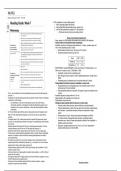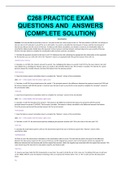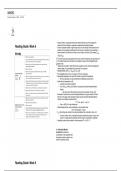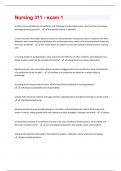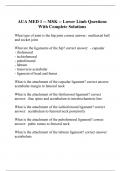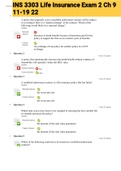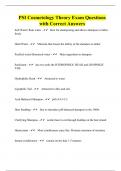Other
READING GUIDE NOTES: WEEK 7 OF BIOCHEMISTRY (BIOSCI98) AT UCI
- Course
- Biochemistry (BIOSCI98)
- Institution
- University Of California - Irvine
Textbook notes corresponding to weekly reading guide of Biochemistry course (code BIOSCI98) at University of California, Irvine. Comes with reading guide, color-coded notes, and simple tables. Week 7.
[Show more]
